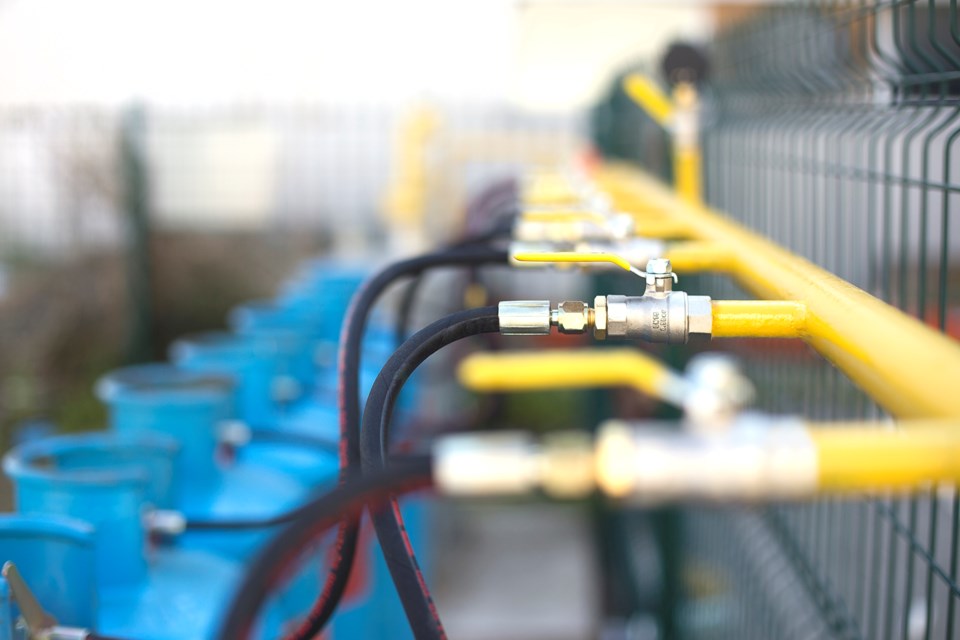In the world’s race for cleaner energy to reduce greenhouse gas emissions, liquefied natural gas (LNG) from Canada has an advantage.
To start with, it comes with a smaller footprint – the lowest emissions intensity of LNG projects in the world. But why?
Canada leads among countries able to export natural gas to displace coal, with LNG that has a demonstrably cleaner environmental footprint.
This was affirmed by regulators in Washington state in 2019 when the permit for the new Tacoma LNG project included the requirement for it to source natural gas from B.C. or Alberta.
The Puget Sound Clean Air Authority found natural gas from Canada to have a cleaner footprint than natural gas produced in the United States, stating that methane emissions in the U.S. “may be as much as five times higher than those from Canada.”
The Tacoma LNG project will enable container ships that transport goods between Washington and Anchorage, Alaska, to switch fuel from diesel to natural gas, and displace diesel used in the Puget Sound area electrical grid during periods of high demand.
Globally, exports are expected to replace coal power, primarily for growing markets in Asia, particularly China and India.
Switching from coal to natural gas for electricity generation reduces emissions by half on average, according to the International Energy Agency. LNG from Canada can deliver an even bigger decrease, reducing emissions by up to 62 per cent, according to a June 2020 study published in the Journal for Cleaner Production.
“Not all LNG is created equal,” researchers from the University of Calgary and the University of Toronto wrote in a report presented at the industry event GeoConvention 2021.
They compared the emissions intensity – or emissions per unit of LNG – of the LNG Canada terminal under construction at Kitimat, B.C., with American competitors, finding a lower footprint for the Canadian project.
According to Oxford Energy Institute, the global average emissions intensity for LNG is 0.35 per cent CO2 per tonne. Once operating after 2025, LNG Canada is expected to have emissions intensity of less than half that, at 0.15 per cent CO2 per tonne.
The proposed Indigenous-led project Cedar LNG would have emissions intensity of 0.08 per cent. Woodfibre LNG, which recently received the go-ahead, would have emissions intensity of 0.03 per cent.
There are four key reasons why Canada has the advantage: shorter shipping distances to customers, a colder climate, the use of hydroelectricity and methane emissions reduction.
Colder climate
Creating LNG from natural gas in cold climates is comparably easier than in warmer regions, saving energy and reducing emissions, the University of Calgary and University of Toronto researchers noted.
For example, the average temperature in Kitimat is much cooler (7C) than the U.S. Gulf Coast (22C in Corpus Christi, Texas), they wrote.
Shorter shipping distances
According to Natural Resources Canada, West Coast LNG projects in Canada are about 10 shipping days from Asia, compared to 20 days for shipments from the U.S. Gulf Coast that transit the Panama Canal.
Proposed projects in Eastern Canada are six to eight shipping days from Europe, the shortest distance of any North American LNG projects, Natural Resources Canada says.
Less time for LNG tankers in the water means less fuel use and lower greenhouse gas emissions.
Use of hydroelectricity
More than half of Canada’s electricity comes from hydropower, helping reduce greenhouse gas emissions from the country’s power grid, according to the Canada Energy Regulator.
LNG projects are expected to connect to the grid to use hydroelectricity to fuel either part or all of their operations, particularly as the new Site C project in B.C. comes online and makes more hydropower available.
Methane emissions reduction
Canada’s oil and gas producers are leaders globally when it comes to reducing methane .
Canadian Energy Centre research found that between 2000 and 2018, emissions from Canada’s oil and gas sector fell by 16 per cent. Compare that to China and Russia, where methane emissions increased by 133 per cent and 47 per cent, respectively, at the same time.
The government of Canada expects oil and gas producers to meet the target of reducing methane emissions by 45 per cent in 2025 compared to levels in 2012.
A reduction of 34 per cent compared to 2014 has already been achieved in Alberta.
Canada’s LNG could be preferred in the world, says Greg Owen, vice-president of Calgary-based GLJ Ltd.
“With our environmental and regulatory standards, I think we have a great LNG product. So let’s get it done.”
Deborah Jaremko is director of content for the Canadian Energy Centre, an Alberta government corporation funded in part by taxes paid by industry on carbon emissions.
©





